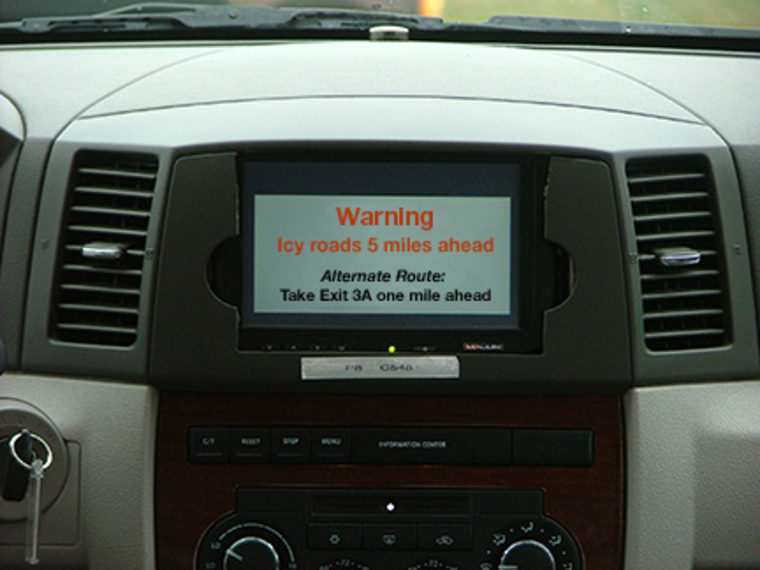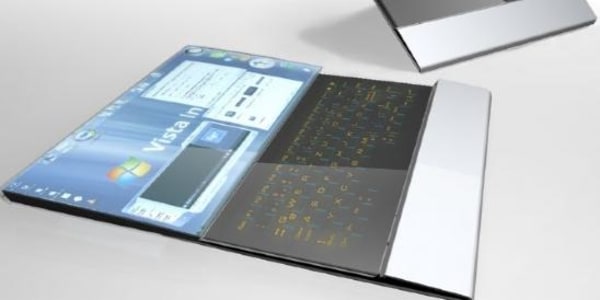Some of the early benefits of the technology that will enable self-steering cars one day will first contribute to improved safety and better information about traffic and weather conditions.
That's because of the federal Department of Transportation’s IntelliDrive program, a five-year effort launched over the summer. It aims to bring together government, industry, academia and other interested parties to specify, develop and produce the necessary technology.
At the very heart of IntelliDrive is a plan to put wireless communications similar to Wi-Fi on every new car, which that car will use to broadcast its “heartbeat” continuously.
This information will include basic facts such as speed, location and direction. Alert to black-helicopter types: the government promises that the data coming from each car will be anonymous so it can’t be used to track individuals’ movements.
That heartbeat information, when examined for all the cars in an area, will instantly reveal where traffic jams exist, as all the cars near the blockage will show very low velocity. Such information will be real time and accurate, unlike some of today’s sources of traffic information, which rely on observations that can be off in that way.
Windshield wiper as sensor
It can also include additional information such as whether cars’ headlights and windshield wipers are on, which would indicate the exact location of where rain or snow are falling.
“Who would have ever thought of a windshield wiper as a sensor?” asked Rod MacKenzie, vice president and chief technical officer of ITS America, an intelligent transportation advocacy group. “Now it is.”
Likewise, a broadcast indicating that cars’ antilock brake systems or electronic stability control systems are active would further warn drivers exactly where very slippery conditions exist.
The ability to share this kind of critical information should help reduce both traffic delays and the number of crashes, said Tim Schmidt, chief technical officer for the Department of Transportation.
The U.S. economy suffers a drain of $78 billion annually because of traffic congestion, he said, with the loss of 4.2 billion hours of drivers’ time and 2.9 billion gallons of wasted fuel.
“Just cutting that in half would be huge,” he said.
As the technology advances and cars are able to assist drivers even more, by knowing, for example, that some cars are stopped just out of sight ahead, fatalities can be prevented, he added.
“Cars cannot prevent all the accidents and deaths that occur, but this should put a big dent in it,” said Schmidt.
Reaching critical mass
The initial obstacle to kick-starting this technology is the need for a critical mass of vehicles equipped with the wireless communications systems to be in place before such devices can provide a benefit to drivers. Also, the cost will be affordable only by building such devices in huge volumes, according to industry experts.
So it may take a government mandate requiring all new cars built after a certain date to contain the transmitters for the infrastructure that will eventually make autonomous vehicles possible.
To make the goal seem worthwhile to policymakers, “we have to define what the costs are and what the benefits are, to pull in other groups, like the insurance industry and the police,” said Schmidt. “We have to stop talking about the abstract.”
Schmidt said his greatest fear is that the United States will dawdle and let another country take the lead on this technology, which could be a valuable advantage to domestic industries. “If we can’t take the lead in this then we’ve got a problem,” he said. “We need to lead in this.”
The good news is that all cars on the road do not need to be equipped with such devices for drivers to benefit, according to Greg Krueger, intelligent transportation manager for the Michigan Department of Transportation. “You can see mobility benefits with market penetration as low as 10 percent,” he said.
Intelligent adaptive cruise control
Some of the earliest beneficiaries will be luxury car drivers, who will be willing to pay for the extra hardware needed to exploit early applications such as intelligent adaptive cruise control, Krueger added.
The sensors used by today’s adaptive cruise control systems have limitations, acknowledged Luca Delgrossi, research and development group manager for Mercedes-Benz, North America.
Slideshow 12 photos
Hot prototypes: Designs on tomorrow’s coolest gadgets
“They have a limited range and cannot detect all relevant data,” he said. Incidents outside the line of sight are the biggest limitation of on-board sensors such as the radar used by today’s adaptive cruise control systems.
“The big opportunity here is to use wireless communication to extend the range beyond what the driver or the vehicle can detect,” he observed.
Such systems could include the ability for the car to automatically respond to situations, such as a red traffic signal ahead.
In the event that the car receives a signal that an upcoming light is red, but the driver gives no sign of stopping for the light, the car can prepare to stop itself if the driver fails to heed the computer’s warning of a red light ahead.
Not all intersections need to be equipped with radios for drivers to benefit, Delgrossi said. “Even a few intersections will be good for us."
So that no one worries that they won’t be able to run a necessary red light while delivering a pregnant woman to a hospital for delivery, Delgrossi promises that in Mercedes-Benz cars, the driver will always be able to override autonomous systems.
Eventually the automatic broadcast of every cars’ “heartbeat” could eliminate the need for regular emissions inspections, suggested MacKenzie. Because cars would be able to automatically indicate when they have a malfunction that could cause excessive pollution, the rest of the cars on the road could be spared the hassle of periodic emissions testing.
So if we don’t worry about being spied on by our windshield wipers, the technology road map shows many beneficial applications along the way to the day when our cars can drive us home from Thanksgiving dinner because we’ve fallen into a coma from too much food. Just don’t expect the car to fly.

